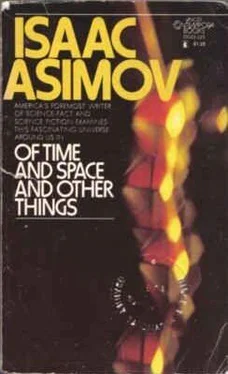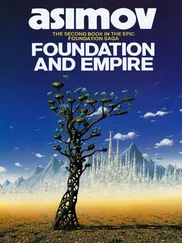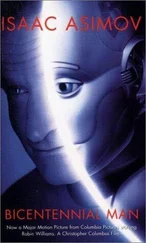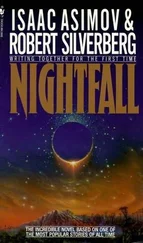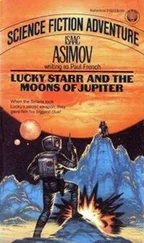Isaac Asimov - Of Time and Space and Other Things
Здесь есть возможность читать онлайн «Isaac Asimov - Of Time and Space and Other Things» весь текст электронной книги совершенно бесплатно (целиком полную версию без сокращений). В некоторых случаях можно слушать аудио, скачать через торрент в формате fb2 и присутствует краткое содержание. Год выпуска: 1972, ISBN: 1972, Издательство: Lancer Books, Жанр: Прочая научная литература, на английском языке. Описание произведения, (предисловие) а так же отзывы посетителей доступны на портале библиотеки ЛибКат.
- Название:Of Time and Space and Other Things
- Автор:
- Издательство:Lancer Books
- Жанр:
- Год:1972
- ISBN:ISBN: 0-447-33023-3
- Рейтинг книги:4 / 5. Голосов: 1
-
Избранное:Добавить в избранное
- Отзывы:
-
Ваша оценка:
- 80
- 1
- 2
- 3
- 4
- 5
Of Time and Space and Other Things: краткое содержание, описание и аннотация
Предлагаем к чтению аннотацию, описание, краткое содержание или предисловие (зависит от того, что написал сам автор книги «Of Time and Space and Other Things»). Если вы не нашли необходимую информацию о книге — напишите в комментариях, мы постараемся отыскать её.
Of Time and Space and Other Things — читать онлайн бесплатно полную книгу (весь текст) целиком
Ниже представлен текст книги, разбитый по страницам. Система сохранения места последней прочитанной страницы, позволяет с удобством читать онлайн бесплатно книгу «Of Time and Space and Other Things», без необходимости каждый раз заново искать на чём Вы остановились. Поставьте закладку, и сможете в любой момент перейти на страницу, на которой закончили чтение.
Интервал:
Закладка:
To raise one pound of mass one foot against gravity takes one foot-pound (abbreviated I ft-lb) of energy. To expand that energy in one second is to deliver 1 foot pound per second (1 ft-lb/sec) and the ft-lb/sec is there fore a permissible unit of power.
The first man to make a serious effort to measure power accuratel was James Watt (1736-1819). He compared y the power of the steam engine he had devised with the power delivered by a horse, thus measuring his machine's rate of delivering energy in horsepower (or hp). In doing so, he first measured the power of a horse in ft-lb/sec and decided that I hp equals 550 ft-lb/sec, a conversion figure which is now standard and official.
The use of foot-pounds per second and horsepower is perfectly legitimate and, in fact, automobile and airplane engines have their power rated in horsepower. The trouble with these units, however, is that they don't tie in easily with the gram-centimeter-second system. A foot-pound is 1.355282 joules and a horsepower is 10.688 kilocalories per minute. These are inconvenient numbers to deal with.
The ideal am centimeter-second unit of power would be ergs per on@ (erg/sec). However, since the erg is such a small unit, it is more convenient to deal with joules per second (joule/sec). And since I joule is equal to 10, 000,000 ergs, 1 joule/sec equals 10,000,000 erg/sec, or 10,000,000 gM CM2/sec3.
Now we need a monosyllable to express the unit joule/ see, and what better monosyllable than the monosyllabic name of the gentleman who first tried to measure power.
So 1 joule/sec was set equal to 1 watt. The watt may be defined as representing the delivery of I joule of energy per second.
Now if power is multiplied by time, you are back to energy. For instance, if 1 watt is multipled by 1 second, you have I watt-sec. Since 1 watt equals 1 joule/sec, 1 watt-sec equals I joule/sec x see, or I joule sec/sec. The sees can cel as you would expect in the ordinary algebraic manipu lation tG which units can be subjected, and you end with the statement that I watt-sec is equal to 1 joule and is, therefore, a unit of energy.
A larger unit of energy of this sort is the kilowatt-,hour (or kw-hr). A kilowatt is equal to 1000 watts and an hour - is equal to 3600 seconds. Therefore a kw-hr is equal to 1000 x 3600 watt-sec, or to 3,600,000 joules, or to 36, 000,000,000,OGO ergs.
Furthermore, since there are 4185 joules in a kilocalorie (kcal), 1 kw-hr is equal to 860 kcal or to 860,000 cal.
A human being who is living on 2500 kcal/day is de livering (in the form of heat, eventually) about 104 kcal/ hr, which is equal to 0.120 kw hr/hr or 120 watts. Next tirhe you're at a crowded cocktail party (or a crowded sub way train or a crowded theater audience) on a hot evening in August, think of that as each additional person walks in.
Each entrance is equivalent to turning on another one hun dred twenty-watt electric bulb. It will make you feel a lot hotter and help you appreciate the new light of understand ing that science brings.
But back to the subject. Now, you see, we have a variety of units into which we can translate the amount of energy ,resulting from the complete conversion of I gram of mass.
That gram of mass will liberate:
900,000,000,000,000,000,000 ergs, or 90,000,000,000,000 joules, or 21,500,000,000,000 calories, or 21,500,000 000 kilocalories, '600 kilowatt-hours. or 25,000, Which brings us to the conclusion that although the erg is indeed a tiny unit, nine hundred quintillion of them still mount up most impressively. Convert a mere one gram of mass into energy and use it with perfect efficiency and you can keep a thousand-watt electric light bulb running for 25,000,000 hours, which is equivalent to 2850 years, or the time from the days of Homer to, the present.
How's that for solving the fuel problem?
We could work it the other way around, too. We might ask: How much mass need we convert to produce I kilo watt-hour oi energy?
Well, if I gram of mass produces 25,000,000 kilowatt hours of energy, then 1 kilowatt-hour of energy is produced by 1/25,000,000 gram.
You can see that this sort of calculation is going to take us into small mass units indeed. Suppose we choose a unit smaller than the gram, say the microgram. This is equal to a millionth of a gram, i.e., 10-11 gram. We can then say that I kilowatt-hour of energy is produced by the conver sion of 0.04 micrograms of mass.
Even the microgram is an inconveniently large unit of mass if we become interested in units of energy smaller than the kilowatt-hour. We could therefore speak of a micromicrogram (or, as it is now called, a picogram). This is a millionth of a millionth of a gram (10-12 gram) or a trillionth of a gram. Using that as a unit, we can say that:
1 kilowatt-hour is equivalent to 40,000 picograms
I kilocalorie fl, 46.5
1 calorie 0.0465
1 joule 0.0195
I erg 0.00000000195
To give you some idea of what this means, the mass of a typical human cell is about 1000 picograms. If, under conditions of dire emergency, the body possessed the abil ity to convert mass to energy, the conversion of the con tents of 125 selected cells (which the body, with 50,000, 000,000 000 cells or so, could well afford) would supply the boY; with 2500 kilocalories and keep it going for a full day.
The amount of mass which, upon conversion, yields 1 erg of energy (and the erg, after all, is the proper unit of energy in the gram-centimeter-second system) is an incon veniently small fraction even in terms of picograms.
We need units smaller still, so suppose we turn to the picopicogram (10-24 gram), which is a trillionth of a tril lion of a gram, or a septillionth of a gram. Using the pico picogram, we find that it takes the conversion of 1950 picopicograms of mass to produce an erg of energy.
And the significance? Well, a single hydrogen atom has a mass of about 1.66 picopicograms. A uranium-235 atom has a mass of about 400 picopicograms. Consequently, an erg of energy is produced by the total conversion of 1200 hydrogen atoms or by 5 uranium-235 atoms.
In ordinary fission, only 1/1000 of the mass is converted to energy so it takes 5000 fissioning uranium atoms to produce I erg of energy. In hydrogen fusion, 1/100 of the mass is converted to energy, so it takes 120,000 fusing hydrogen atoms to produce 1 erg of energy.
And with that, we can let e mc,2 rest for the nonce.
14. A Piece Of The Action
When my book 1, Robot was reissued by the estimable gentlemen of Doubleday amp; Company, it was with a great deal of satisfaction that I noted- certain reviewers (posses sing obvious intelligence and good taste) beginning to refer to it as a "classic."
"Classic" is derived in exactly the same way, and has precisely the same meaning, as our own "first-class" and our colloquial "classy"; and any of these words represents my own opinion of 1, Robot, too; except that (owing to my modesty) I would rather die than admit it. I mention it here only because I am speaking confidentially.
However, "classic" has a secondary meaning that dis pleases me. The word came into its own when the literary men of the Renaissance used it to refer to those works of the ancient Greeks and Romans on which they were model ing their own efforts. Consequently, "classic" has come to mean not only good, but also old.
Now 1, Robot first appeared a number of years -ago and some of the material in it was written… Well, never mind. The point is that I have decided to feel a little hurt at being considered old enough to have written a classic, and therefore I will devote this chapter to the one field where "classic" is rather a term of insult.
Naturally, that field must be one where to be old is, almost automatically, to be wrong and incomplete. One may talk about Modem Art or Modern Literature or Modem Furniture and sneer as one speaks, comparing each, to their disadvantage, with the greater work of earlier ages. When one speaks of Modem Science, however, one removes one's hat and places it reverently upon the breast.
Читать дальшеИнтервал:
Закладка:
Похожие книги на «Of Time and Space and Other Things»
Представляем Вашему вниманию похожие книги на «Of Time and Space and Other Things» списком для выбора. Мы отобрали схожую по названию и смыслу литературу в надежде предоставить читателям больше вариантов отыскать новые, интересные, ещё непрочитанные произведения.
Обсуждение, отзывы о книге «Of Time and Space and Other Things» и просто собственные мнения читателей. Оставьте ваши комментарии, напишите, что Вы думаете о произведении, его смысле или главных героях. Укажите что конкретно понравилось, а что нет, и почему Вы так считаете.
